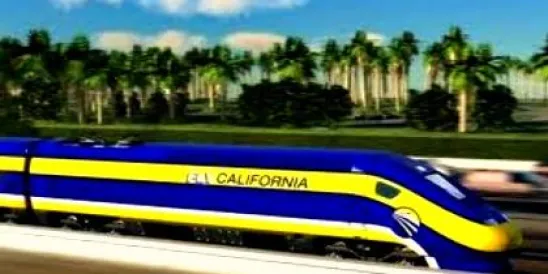HSR Authority to produce formal business plan on November 1 for public review and comment.
California’s High Speed Rail (HSR) project is based on express state statutory authorization and has billions of dollars in public funding authorized. While there are and will be questions and criticisms from the public, there is currently an express California statutory will, as well as a political will among state and federal leaders, to move forward to make this a signature public-private transportation project. Not insignificant, for example, is California Governor Jerry Brown’s recently affirmed public desire to proceed.
Significant funding authorization was approved by the voters in Proposition 1A on November 4, 2008. This California Proposition added enabling statutory language and cannot be repealed without another majority vote of the public (which is not likely to occur in this instance). Proposition 1A, moreover, enacted HSR bond authorization into state law in the form of California Streets and Highways Code Section 2704, et seq. (the “Safe, Reliable, High-Speed Passenger Train Bond Act for the 21st Century”). Prop. 1A and that resulting state bonding law allows for the state to issue up to $9.95 billion in General Obligation bonds for the use of construction of the CA HSR system.
At this point, to sell some or all of these bonds, the California High Speed Rail Authority (“the Authority”) will need to obtain Governor Brown’s support for specific HSR funding for next year (which is presently anticipated), followed by legislative approval in the state’s annual budget. Specifically, the use of bond proceeds for HSR would be appropriated by the Legislature in its annual Budget Act for HSR planning, engineering and capital costs of construction. The bonds are general obligation bonds which, when sold, become a valid and binding obligation of the State of California, with the full faith and credit of the State of California pledged for the punctual payment of both principal and interest.
The Authority intends to designate an initial $2.8 billion in California bond proceeds to Phase I of the HSR construction. The Authority also intends to use $3.3 billion in federal American Recovery and Reinvestment Act of 2009 (ARRA) and FY 2010 federal dollars already allocated. The federal government has appropriated a total of $5.5 billion in funding to California, which sums must be utilized starting in 2012 (in order to meet 2017 federal spending deadlines). It is also worth noting that the California legislature created the Authority in 1996. The California legislature statutorily declared "Development of a high-speed rail system is a necessary and viable alternative to automobile and air travel in the state” and required that “In order for the state to have a comprehensive network of high-speed intercity rail systems by the year 2020, it must begin preparation of a high-speed intercity rail plan similar to California’s former freeway plan and designate an entity with stable and predictable funding sources to implement the plan”. Trains are statutorily required to be “capable of sustained speeds of 200 miles per hour or greater.” The Legislature also declared that the HSR system will be built and operated “utilizing private and public financing.”
The HSR Authority will produce a formal detailed Business Plan on November 1, 2011, for public review and comment. The Business Plan will shape the financial and operational implementation of the HSR project, and must be adopted and submitted to the Legislature by January 1, 2012 (and every two years thereafter).
The Business Plan must include, among other things:
- a forecast of the anticipated patronage, operating and maintenance costs, and capital costs for the system
- an estimate and description of the total anticipated federal, state, local and other funds the authority intends to access to fund the construction and operation of the system, including an official assessment of the “level of confidence” for funding
- alternative financial pro formas for the different levels of service
- the proposed chronology for the construction
The Business Plan must also include an analysis “of all reasonably foreseeable risks …” and proposals for dealing with them.
A public hearing will be held before the Business Plan is officially adopted, and interested parties (including potential bidders and contractors) will have an opportunity to submit formal written comments on any aspect of the Business Plan in the 60 days following its release on November 1, 2011. This upcoming formal written comment period can be used as an opportunity to voice concerns and influence the specific financial and operational requirements of the CA HSR project.




 />i
/>i

